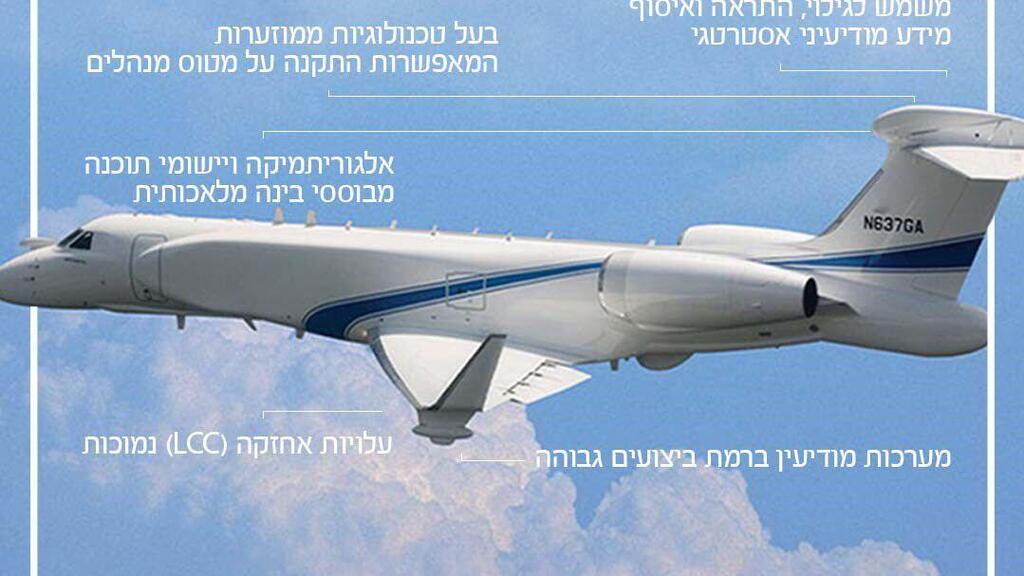Getting your Trinity Audio player ready...
The MARS2 spy jet
(Video: YouTube)
Just months before it becomes operational, the Israeli Air Force (IAF) and the Israel Aerospace Industries on Wednesday presented the new Israeli stealth jet, "MARS2 ELI-3150" at the Air Show in Paris.
Read more:
The new mission aircraft of the IAF is currently in the advanced stages of implementation in the Nahshon Squadron at the Nevatim Airbase and will be dubbed "Oron. It will join the two existing mission aircraft, the Haitam, and the Shavit.
The security industries estimate the cost of the purchase of the aircraft to be in the billions of dollars. It includes the purchase of advanced aircraft from the American manufacturer Galpsterim and the specialized equipment and devices produced, installed, and maintained by the aerospace industry.
The new aircraft is designed for strategic intelligence-gathering missions using perimeter tracking within a radius of thousands of kilometers, with advanced cameras, large-scale sensors, listening capabilities, and, most importantly, innovative AI technologies and algorithms for processing vast amounts of data within minutes. All of this is aimed at creating an accurate and up-to-date intelligence picture and transmitting it rapidly from the manned aerial station to intelligence officers on the ground.
The aerospace industry, which also produces strategic UAVs, states that the main advantage of the new manned aircraft lies in its information-gathering capacity through hundreds of onboard sensors, resulting in amounts of intelligence that are more than ten times greater than that of a strategic UAV.
As a result, command centers and military leaders receive real-time, finalized intelligence products from the officers on board the aircraft. Similar to previous models, the new aircraft, known as Oron in the IAF, operates at altitudes of 40,000 to 50,000 feet and can reach them within 25 minutes. Its flight range extends to over 1,000 kilometers, making it relevant for sensitive missions against countries in the third circle, including Iran.
The detection and surveillance systems installed on the Oron have undergone enhancement, significantly improving its capabilities to detect and classify various intelligence details, both at sea and on land. The development of the Oron has spanned a decade, and its transmission and distribution capabilities are robust and protected over hundreds of kilometers.
The aircraft can identify both mobile and stationary objects, and unlike its existing counterparts, it will not be equipped with full air superiority capabilities due to changing requirements. However, it will serve as a high-ranking commander's platform in case there is a need for managing large-scale operations "from the field." About one-third of the aircraft's weight will be dedicated to housing dozens of computers. The aircraft will have eight stations for intelligence officers and large-scale sensors manufactured by Elta, the aerospace industry's subsidiary.






